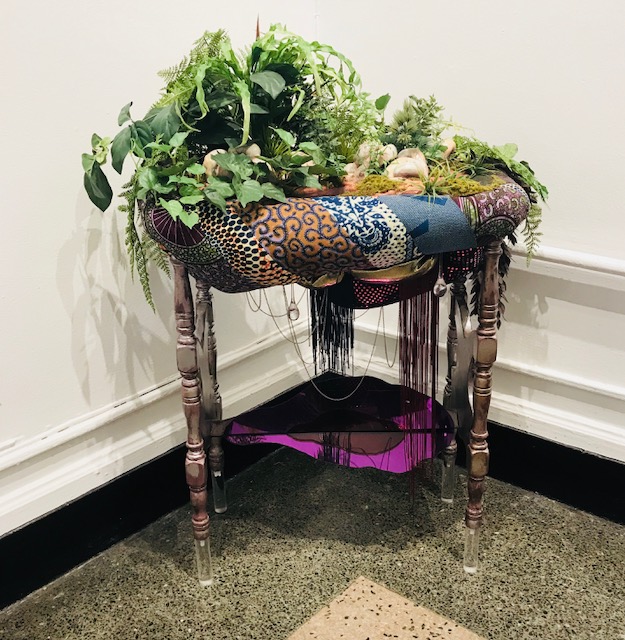
D. Dominick Lombardi has curated a great show at the Arsenal Gallery in Central Park off of Fifth Avenue. On view through April 26th featuring the work of Tim Daly, Cecilia Whittaker Doe, Jodie Mim Goodnough, Brant Moorefield, Lina Puerta and Dominick Rapone. A show of work imagining that, although the relationship between humanity and nature is seen as having rivaling needs, here the two forces are depicted growing together in dialectical resolution.
I know the painter Tim Daly's work from being a fellow scenic in the film industry. His favourite subject is New Jersey -- a state where the industrial and the organic sometimes contrast in the strangest ways. Some areas are a huge grassland filled with wildlife that is also home to miles of abandoned factory buildings. It's important to see the paintings so that you can experience the way the physicality of pigment on canvas contrasts with Daly's cinematic vision.
As contemporary art has dropped its "isms," its singular ideologies for a preferred mixed approach, art making has become more like thinking. Not just about what an art work means but also about the material character of things. Lina Puerta's "Table" (image below) is a salad of objects on a table. Moss and plastic, printed fabric and artificial plants. A fantasy on a theme of furniture and living matter.
Brant Moorefield's paintings successfully evoke an image of nature carrying or holding humanity. Or is it the other way round? He paints realistically but the compositions are abstract. They really do, do both.
"Forest Therapy Trail" is a photograph by Jodie Mim Goodnough. "Yama no Furusato Mura" is in the region of Okutama in the hills outside of Tokyo. It is a "Woodland Therapy Centre." Another one of those brilliant Japanese ways of communing with the landscape in a slightly curated place that is only an hour and a half from one of the busiest cities on earth. Goodnough's photo reveals how the concept falls slightly short of the reality. Depicting what looks like a shabby minimalist sculpture on a rambly forest path.
Peter Wohlleben's mind expanding book "The Hidden Life of Trees" introduces us to the idea of trees thinking. How the roots of a tree act like a brain and join together underground, with other trees to create a living, considering, feeling forest. The art in this show accepts the consciousness of plants so as to imagine humans and the outdoors communing. But Wohlleben proposes that this need not be a metaphor. That we do already think together.
Hegel employed the dialectic to study thinking more than to study The Natural World. I wonder what he would have made of a thinking countryside?
